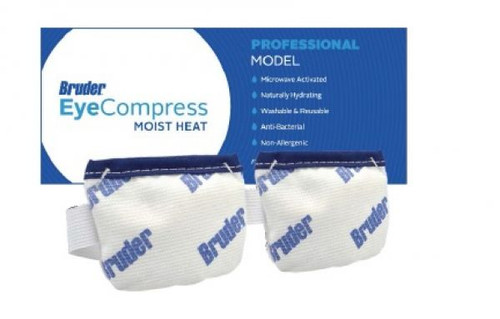

Warm face cloths or wheat bags? For how many minutes and for how many days, weeks, or months? How much improvement can you expect? In fact, do warm compresses even work? However, it may not always be clear exactly what to recommend. ⦁ When using an eye mask, it may take at least 2 weeks to see an improvement in symptoms and 4 to 8 weeks to see improvements in clinical signs of dry eye.Įye care professionals are well-versed in prescribing warm compresses for dry eye treatment. ⦁ To massage the lids, instruct patient to press on the lid margin with their fingertips and to move along the lid margin until it has all been pressed.

⦁ Warm compress treatment is effective even without massaging the eyelids afterwards, but it is still recommended to instruct patients to massage their lids for an added benefit. ⦁ Face cloths are not effective as warm compresses unless applied using the bundle method. ⦁ The optimal temperature for heat therapy for MGD to be between 40 and 41.5☌.

⦁ To improve compliance with warm compresses, schedule patients for review appointments. It is often recommended as a first-aid measure, specifically a few days after the major primary swelling has gone down.⦁ Warm compresses are an effective treatment for dry eye caused by meibomian gland dysfunction. It causes bruising and subcutaneous (under the skin) bleeding, pain, inflammation, and discoloration around the eye.Ī warm compress may help with pain from a black eye. Black eyeīlack eye (also called periorbital hematoma) is caused by trauma to the eye. Make sure to use antibiotics or other infection-fighting medicines if recommended by your eye doctor in addition to your warm compress if you have been diagnosed with an infection. Warm compresses may help with pain, itchiness, discharge, and inflammation. It is typically caused by bacteria, virus, or allergy. Pink eye (also called conjunctivitis) is a swelling of the inner conjunctiva of the eye. Using a compress may also be helpful for a common type of eye inflammation, pink eye. They can provide relief, but they cannot cure dry eye conditions. Warm compresses are a common approach to dry eye-related conditions, including meibomian gland dysfunction. The heat from the compress helps glands that produce tears to work better. Warm compresses may even help with dry eyes. It is not proven to cure any of these conditions. With each these conditions, applying a warm compress may provide some relief of symptoms. Rarer causes include Graves’ disease or eye cancer, which can also cause the condition. Warm compresses can help these symptoms, too. Though styes and blepharitis involve swollen eyelids, swollen eyes or eyelids may occur for other reasons. The swelling of the eyelids is referred to as blepharitis.Īccording to a 2012 review of multiple research studies, compresses have shown to be helpful in relieving blepharitis symptoms. Blepharitisīesides styes, eyelids can become inflamed or swollen for other reasons. They may soften and drain away any blockages. Warm compresses are a common approach for relief. Styes occur when a localized part of the eyelid becomes swollen, either due to gland blockage or infection. These may also be called hordeola (hordeolum singular) or chalazia (chalazion singular). For the eye, they can improve circulation, soothe inflammation, and unclog swollen eyelids.įor this reason, they can be very helpful for the following eye conditions: StyesĪ warm compress is a common approach to treating styes. Warm compresses have been a popular home remedy for many reasons.


 0 kommentar(er)
0 kommentar(er)
